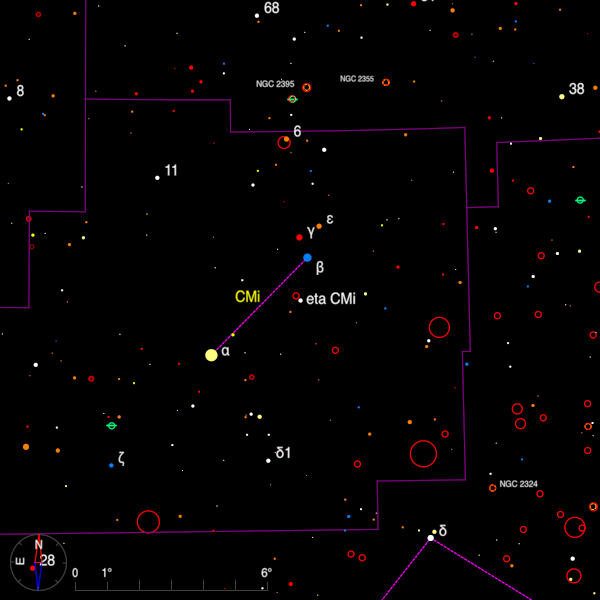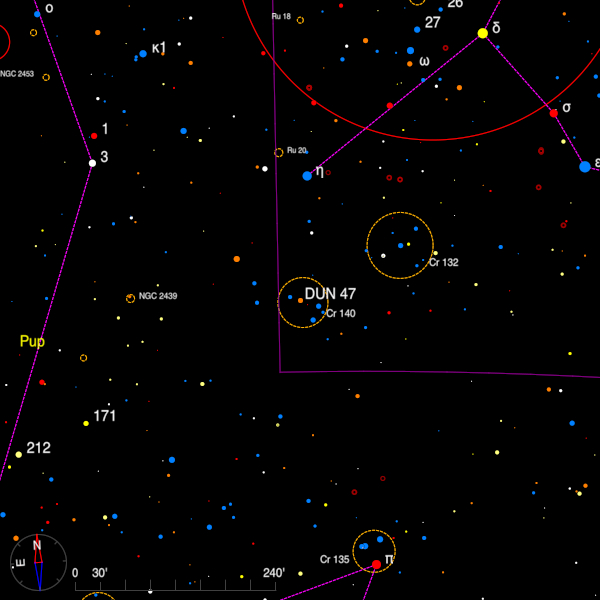February 2022 - Double Star of the Month
To the naked eye, Canis Minor is essentially two stars - Procyon and beta (or Gomeisa). In the field with Procyon is STF 1126 which has already been described in this column (Feb 2014). Starting at Gomeisa, move 1.5 degrees due south and slightly east and you will alight on eta CMi (07 28 02.1 +06 56 32), a magnitude 5.3 star. It is also known as BU 21, the low number indicating it was in the first list of discoveries, made with the famous 6-inch Clark refractor, which S W Burnham published in 1870.

The Washington Double Star Catalog (WDS) gives the magnitude of B as 11.1 and the latest measures places it 4".3 from the bright primary. Gaia EDR3 tells us that the stars are at the same distance from us, within the errors of measurement i.e. 319 light-years, and that the proper motions are almost identical.
Two and a half degrees south of eta CMa (Aludra) is an equilateral triangle of 5th magnitude stars, the north-easterly of which is a fine triple for medium apertures and a difficult quadruple for 30-cm upwards.

The region was noted by James Dunlop at Paramatta when he saw a very wide and unequal pair of stars which he catalogued as DUN 47 (07 24 43.9 -31 48 32), and which is now given as AC in the WDS. These are 5.4 and 7.6 at 344 degrees and 97". A third star (B) was added by Bernhard Dawson observing with a 15-inch refractor at La Plata in Argentina. He noted a magnitude 9.7 just 2".2 from the primary and some years later Willem van den Bos added D, a magnitude 10.8 at 0".9 from C, a star which has not been measured since 1965.
Stars A and B have parallaxes close to 5.2 milli-arcseconds (630 light-years), whilst C and D are considerably more distant (mean parallax of 2.4 mas = 1360 light-years) and thus placing them at about the same distance as the nearby cluster Collinder 140. (This is a revised version - I'm grateful to John Greaves for pointing out an error in the original text).
Bob Argyle - Double Star Section Director